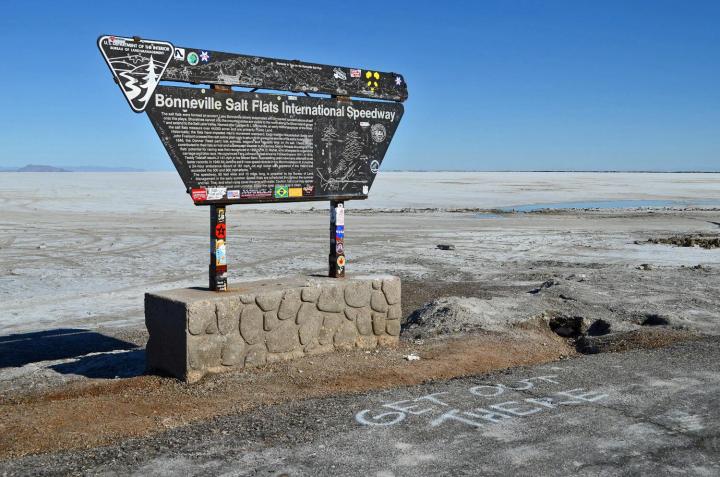
Last year, Speed Week was canceled because heavy rains caused a thick layer of mud to run down from nearby mountains, turning the parts of the Salt Flats where races are typically held into a quagmire. SCTA is facing a similar issue this year, and relocating the courses — including the nine-mile tracks needed for intrepid racers who want to hit 500 mph — is easier said than done because the Flats have been steadily shrinking for the past couple of years.
Scientists disagree on why the Flats are getting smaller. Many point the finger at the local mining industry, which has been drawing salt from the region since the early 1900s, while some claim that it’s simply a natural phenomenon. “The Salt Flats are an immensely complicated system that no one fully understands,” summed up Bill White, a retired geologist who worked for the U.S. Bureau of Land Management.
What nearly everyone agrees on is that the Salt Flats are getting thinner. The Salt Lake Tribune reports that the crust used to be anywhere between two to three feet thick in the 1950s, and it’s currently no more than two inches thick.
Many have looked into moving Speed Week to another venue altogether. While land speed records can be set in the desert or on air strips, the Salt Flats are unique because they allow organizers to hold major international events and they make it possible for racers to safely decelerate from extremely high speeds.
“If we could take it somewhere else, people would have already looked there. We need thickness, length, purity. That’s what we’re battling for right now,” explained Dennis Sullivan, the president of the Utah Salt Flats Racing Association
The SCTA will decide whether to cancel Speed Week by July 22nd. If the event is held, it will kick off on August 8th.
Editors' Recommendations
- AMD’s canceled GPU could have crushed Nvidia
- NASA aborted SpaceX mission because launch itself could have triggered lightning



